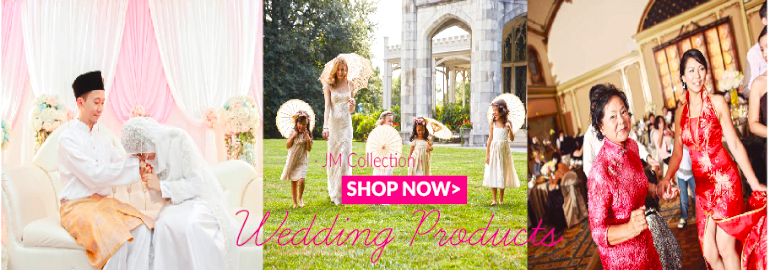Wedding Traditions in Asia

There is something inherently mysterious and romantic about Asia…the mysterious Far East. And when it comes to weddings, the rich diversity of Asian cultures, traditions and religions makes for a wide variety of colorful and fascinating wedding customs.
In the land of the rising sun
In Japan, for instance, purple is the color of love and a young bride may choose to wear an elaborately-embroidered silk kimono covered in purple iris-flowers. Weddings are traditionally either Shinto, during which the natural spirits, the kami, are called upon to bless the couple, or it might be a Buddhist ceremony during which two strings of beads are interwoven, symbolizing the joining of two families into one.
The dragon and the phoenix
Chinese traditions held that the gift of a whole roast pig given by the groom’s family to the bride’s family was an appropriate engagement gift. The traditional wedding gown in China is bright red, symbolizing luck for the new couple. Chinese bridal gowns are traditionally adorned with elaborate golden phoenixes, chrysanthemums and peonies, symbols of wealth and good fortune. The groom traditionally wears a black silk coat over a robe embroidered with a dragon, and you can expect loud firecrackers at a Chinese wedding to scare off evil spirits.
The reception that goes on and on...
In Indonesia it is not uncommon for more than 1,000 guests to be invited to the wedding reception and it is customary for the bride and the groom to greet each guest in a long receiving line before the reception festivities can begin.
May good fortune always be yours.
In Korea it is traditional for a fortune-teller, known as a kung-hap, to look into the couple’s future before they are married in order to see if they will live harmoniously together. A harmonious union is very important since the engagement gifts alone for a traditional Korean wedding can cost upwards of $40,000.
A three-day wedding ceremony.
An early Filipino custom required the groom to throw a spear into the front steps of his intended-bride’s home. This was a dramatic symbol to everyone that she had been spoken for. Today this tradition has been replaced with a gold engagement ring. Today the majority of Filipino weddings are Catholic, but in days gone by a Filipino wedding lasted three days, with ceremonies performed each day until the third day when the couple joined hands and declared their love for each other three times and their hands were bound together with a chord and the priest declared them married.
The journey of a lifetime begins with milk and water.
In India and other countries with a Hindu culture it is considered bad luck for the bride and groom to see each other for several days before the wedding. As part of the marriage ceremony the bride’s parents wash the couple’s feet with milk and water as a symbol of purifying them for the journey of their new life together. As part of the ceremony the couple holds in their hands grains of rice and oats and green leaves, signifying wealth, good health and happiness.
Many cultures, many traditions with but a single goal: to unite two hearts into one.
Many Asian cultures, many traditions, but all are centered around the basic concept of a new beginning, a new journey down the path of life together, hand in hand, filled with love and a new commitment of two hearts joined forever as one.



